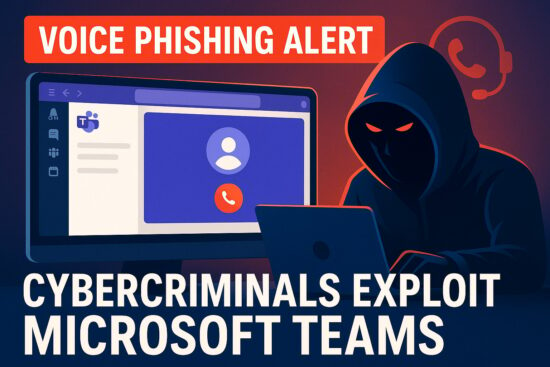Guaranteed Process That Will Drastically Cut Down On Phishing & Ransomware Impact Your Business
In today’s digital landscape, staying vigilant against phishing attempts is essential to protecting your information. To assist with this, I’ll introduce a simple and efficient tool, the SLAM method, which is instrumental in quickly identifying phishing emails.
Phishing tactics constantly evolve, with attackers imitating legitimate sources to trick you. You stand a better chance of identifying fraudulent communication by scrutinizing the sender’s email for subtle discrepancies and exercising caution with links by hovering rather than clicking. Similarly, handling unexpected email attachments with skepticism is crucial; always verify their legitimacy through trusted channels.
Another critical defensive measure is to observe the message’s tone and content for red flags, such as a false sense of urgency. It’s important to share these strategies with your colleagues and friends, as mindful action can significantly reduce the risks posed by these cyber threats. Implementing the SLAM method—focusing on the sender, link, attachment, and message—enhances the safety of your IT environment. Awareness and education are your best defenses in maintaining a secure digital space.
Key Takeaways
- Utilize the SLAM method to detect phishing by examining the sender, link, attachment, and message.
- Verify suspicious email elements through independent and reliable sources.
- Educate your network about these practices to bolster collective IT security.
Understanding the SLAM Technique
Identifying Phishing Emails with SLAM
When sifting through your inbox, it’s critical to identify potential phishing emails. SLAM is a practical framework which stands for:
- Sender Verification
- Link Examination
- Attachment Caution
- Message Assessment
- Examine the Sender:
- Scrutinize email addresses for subtle changes.
- Look for unexpected alterations, such as changing “.com” to “.net.”
- Verify the spelling of names. Minor tweaks, like adding or replacing a letter, can be a red flag.
- Survey the Links:
- Before clicking, hover over links to confirm the URL direction.
- Exercise caution if the link’s destination seems dubious or unrelated to the sender.
- Attachments:
- Do not open unsolicited attachments.
- If an attachment arrives unexpectedly, contact the sender using verified contact information found independently, not from the email.
- Assess the Message:
- Be wary of content that instills urgency or feels inappropriate.
- Phrasing or tone that seems out of character may signal a phishing attempt.
Sharing this SLAM approach with colleagues and friends is vital for IT security. Awareness and diligence in reviewing the elements of each email can significantly reduce the risk of falling victim to scams and maintaining digital safety.

Safety Reminders
Exercise Vigilance with Email Correspondence
When assessing the legitimacy of incoming emails, scrutinize the following components:
- Examine the Sender: Verify that the email address resembles your expectations. Malicious parties often alter just one or two letters in an email domain or a person’s name to appear credible.
- Inspect Links Before Clicking: You can preview the URL to ensure it directs to a trustworthy site by hovering over hyperlinks without clicking them. This preview protects against deceptive sites that may compromise your security.
- Treat Attachments with Caution: Avoid opening unexpected email attachments. If you were not expecting an attachment, contact the purported sender directly using contact information obtained independently to confirm its authenticity.
- Analyze the Message Content: An urgent tone, unfamiliar greetings, or unusual requests can signal a fraudulent email. Pay attention to how the message aligns with typical communications from the expected sender.
Final Thoughts on Email Vigilance
While exploring the landscape of digital correspondence, it’s crucial to arm yourself with practical tactics to sniff out deceptive emails. Adopting the SLAM methodology offers a streamlined approach to scrutinizing suspicious messages.
- Sender Examination—Thoroughly scour the sender’s email address. Minor domain name alterations or character spelling changes—such as switching “.com” to “.net”—could signal malicious intent.
- Link Investigation—Before clicking on any links, position your cursor over them to preview the URL destination. This hover technique reveals the link’s proper pathway without activating it.
- Attachment Precaution – Exercise caution when handling unexpected attachments. Avoid opening them and verify the sender’s authenticity through independent means, such as contacting the organization directly via trusted channels.
- Message Analysis – Assess the email’s content critically. Look for high-pressure language or requests that seem atypical compared to usual communication patterns.
Sharing this technique broadly can drastically reduce the risk of digital threats within your network. Educate your colleagues and friends to prioritize cybersecurity, reinforcing that vigilance is a collective responsibility.
Remember to stay informed on best practices for online security to maintain a robust defense against cyber threats. For further knowledge enrichment, consider subscribing for more insights.





